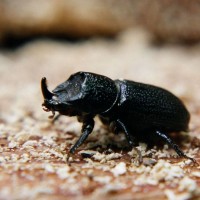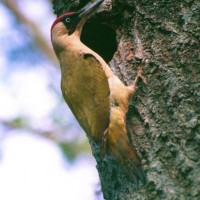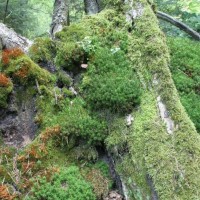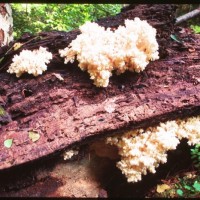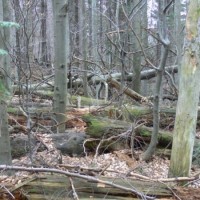
Dead wood is a natural and necessary part of the forest ecosystems. Coarse woody debris (CWD) as well as snags are not a junk material that clutters the forest (contrary to what is sometimes claimed) or a source of pathogen hazard.
Dead wood is a significant component of woodland, typical of natural forests therefore forests of great natural value, which is a condition for ecosystem’s biodiversity and its proper functioning. Partially or completely dead trees form a natural habitat for a wide range of living organisms. Fungi start and continuously contribute to the complete wood decomposition process. Insects, and other invertebrates of various systematic groups, feed on dead wood at different stages of decomposition, or eat other organisms which inhabit it. Animals (both invertebrates and vertebrates) use dead rotting wood as a place for nesting, shelter, and winter sleep. Dead trees, standing or fallen, are also a natural habitat for many plant species, including mosses, lichens, and slime moulds.
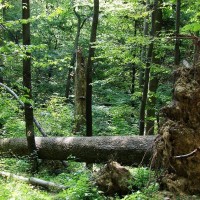
For all these organisms, dead wood is vital. Yet in managed forests, which are predominant in Poland, there is a considerable shortage of it, resulting from the basic aim of the forest economy, namely making most of timber production. Consequently, organisms more or less strictly dependent on dead wood can be counted as endangered species. Their only chance to survive is in the forests not affected by economy, that is those of natural reserves and national parks.
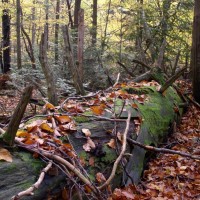
It usually takes spruce or fir logs some 60-80 years to decompose, and old oak trunks – even more than 100 years. The decomposition process is faster in humid places, and when a tree lies on the ground than in dry places, and when a tree stands. Rotten hollows in old, but still living trees (oaks, limes, and willows), originate and develop during a long process which can take even more than 100 years.
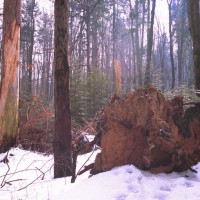
Another issue is the importance of the dead wood decomposition process to the habitat general fertility. If a dead tree remains in the place of its growth, all the mineral substances will come back to the soil. Furthermore, laying rotten trunks impede the outflow of water. Thus, they improve infiltration, help to maintain humidity, and are a decisive inhibitor of rain water outflow.
Walking down the forest trails of the Świętokrzyski National Park, we can see a great number of snags, coarse woody habitats, and old trees, overgrown with bracket fungi. Having observed the abundance of organisms there, we will inevitably come to a conclusion that the forest with many partially and completely dead trees bustles with life much more intensive and diverse than the one in a forest with hardly any dead wood.


